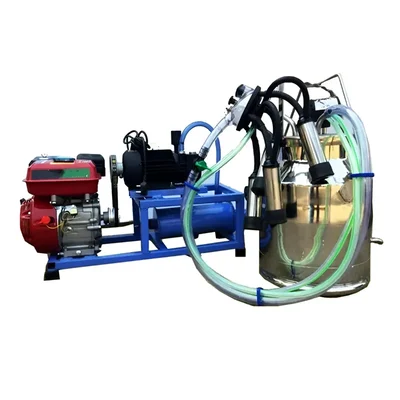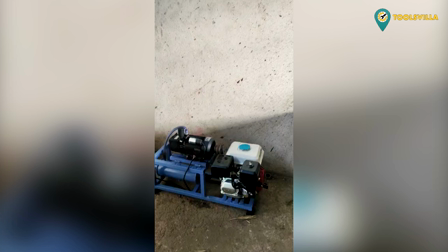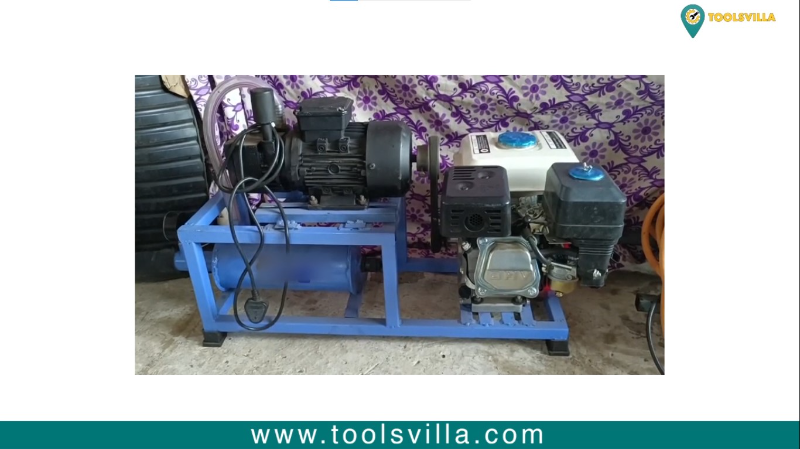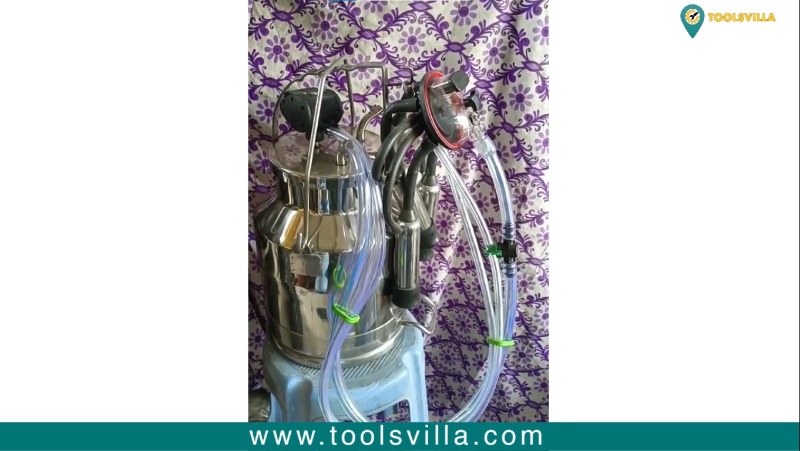- Farm & Garden
- Pumps & Motors
- Food Processing
- Workshop, DIY & MRO

<
>
Brand: Generic ( Made in India )
Single Bucket (25 Litres) Milking Machine With 0.75HP Motor & 6.5HP Engine
SKU: AP-CM-20220136
 18 people have bought this recently
18 people have bought this recently  Delivery By: Dec 13 - Dec 15
Delivery By: Dec 13 - Dec 15 




MRP : ₹38365 ₹30365
21% OFF!

 18 people have bought this recently
18 people have bought this recently  Delivery By: Dec 13 - Dec 15
Delivery By: Dec 13 - Dec 15 
Easy Return
& Refund
& Refund

Quality
Assurance
Assurance

Trusted
Delivery
Delivery

After Sales
Assistance
Assistance

Buyer
Protection
Protection
₹30365 (Including GST)
MRP : ₹38365
21% OFF!
Get Extra ₹455 OFF on Prepaid Orders
QTY :
-
1
+
Short Description
Commercial Type Single Bucket Milking Machine
With 180 LPM Pump, 0.75HP Motor & 6.5HP Engine
Stainless Steel Bucket of Capacity 25 Litres
With 180 LPM Pump, 0.75HP Motor & 6.5HP Engine
Stainless Steel Bucket of Capacity 25 Litres
Suitable for 1-10 Cows & 1-5 Buffaloes
Country of origin: India
Specifications
- Brand: Generic ( Made in India )
- Weight (Approx.) : 30 kg
- Material : Stainless Steel
- Model No. : CE 03 + Engine
- Power Source : Motor & Engine
- Motor Power : 0.75 HP Single Phase
- Engine Power : 6.5 HP (Petrol)
- Pump : 180 LPM (Oil lubricated Monoblock )
- No. of Bucket : 1
- Bucket Volume : 25 Litres
- Tank/Bucket Material : Stainless Steel
- Pulsator : 60/40 pneumatic
- Claw : 240 cc Classic
- 35 feet (1066.8 cm) Length Vacuum Pipe
Description
A Single Bucket Milking machine is used to extract milk from cows & buffaloes. This machine is designed to automate the tedious and time consuming manual milking process, in order to reduce both manual labour and time. This machine uses vacuum pressure in order to suck milk from the cows/buffaloes udders and transfers it to the milking bucket.
Accessories
:Applications
:- Commercial Dairy Farming : Milking machines are primarily used in commercial dairy farms to increase efficiency and productivity. They allow for the rapid milking of large numbers of cows, significantly reducing labor costs and time compared to traditional hand milking.
- Improved Milk Quality : The use of milking machines helps maintain better hygiene standards during the milking process. Automated systems minimize human contact with milk, reducing the risk of contamination and ensuring higher quality milk production.
- Small-Scale Dairy Operations : While primarily associated with large-scale operations, smaller farms also benefit from portable or smaller capacity milking machines that allow them to enhance their productivity without significant investment in infrastructure.
Toolsvilla deals with various types of Dairy Equipment. Wide varieties of Milking Machines are used for milking cows & buffaloes. Chaff Cutter Machine used to feed dairy cattle to improve their milk production.
Usage
:Step 1 : Preparing for Milking
- Clean the Milking Area : Sanitize the Milking area ensure the milking area is clean and sanitary to prevent contamination of the milk.
- Prepare the Equipment : Check the milking machine for any signs of wear and tear. Make sure all components are clean and functioning properly.
Step 2 : Setting Up the Milking Machine
- Connect the Vacuum Pump : Plug into a power source and check that all connections are secure.
- Test the Vacuum : Before attaching the teat cups, test the vacuum system to ensure it is functioning correctly; there should be adequate suction.
- Adjust the Milking Pulsator : Set the pulsator rate according to the manufacturer's instructions.
Step 3 : Milking Process
- Position the Teat Cups : Guide each teat cup onto the respective teats gently and securely. Ensure that they are aligned properly to avoid any discomfort to the animal.
- Check for Proper Seal : Observe if the tea cups are holding their position without excessive pressure. A good seal will maintain the right suction.
- Observe Milk Flow : As the milking progresses, monitor the flow of milk through the milk line. A steady flow indicates that the suction is working effectively.
- Watch for Discomfort : Keep an eye on the animal for signs of discomfort. If the animal appears stressed or agitated, stop the process and reassess the machine setup.
- Signs of Completion : Detach the cups once the milk flow significantly slows or stops. This typically indicates that the udder is empty.
- Release Vacuum : Turn off the vacuum pump before removing the teat cups to avoid discomfort or injury to the animal.
Step 4 : Maintenance of Milking Machine
- Daily Cleaning : After each milking session, dismantle and wash all components with warm water and a suitable detergent. Rinse thoroughly to remove any residues.
- Regular Inspection : Check for wear and tear, especially on rubber components such as gaskets and liners. Replace them as needed to prevent leaks and ensure proper function.
- Periodic Servicing : Schedule regular professional maintenance checks on your milking machine to keep it in optimal condition.

Select attribute






jpg)
jpg)







